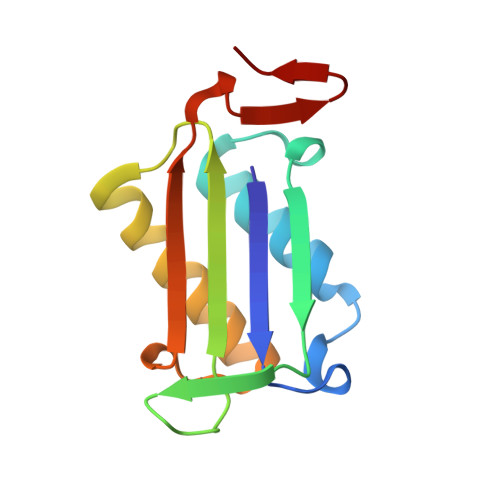A Fluorescence Polarization Assay for Binding to Macrophage Migration Inhibitory Factor and Crystal Structures for Complexes of Two Potent Inhibitors.
Cisneros, J.A., Robertson, M.J., Valhondo, M., Jorgensen, W.L.(2016) J Am Chem Soc 138: 8630-8638
- PubMed: 27299179
- DOI: https://doi.org/10.1021/jacs.6b04910
- Primary Citation of Related Structures:
5HVS, 5HVT - PubMed Abstract:
Human macrophage migration inhibitory factor (MIF) is both a keto-enol tautomerase and a cytokine associated with numerous inflammatory diseases and cancer. Consistent with observed correlations between inhibition of the enzymatic and biological activities, discovery of MIF inhibitors has focused on monitoring the tautomerase activity using l-dopachrome methyl ester or 4-hydroxyphenyl pyruvic acid as substrates. The accuracy of these assays is compromised by several issues including substrate instability, spectral interference, and short linear periods for product formation. In this work, we report the syntheses of fluorescently labeled MIF inhibitors and their use in the first fluorescence polarization-based assay to measure the direct binding of inhibitors to the active site. The assay allows the accurate and efficient identification of competitive, noncompetitive, and covalent inhibitors of MIF in a manner that can be scaled for high-throughput screening. The results for 22 compounds show that the most potent MIF inhibitors bind with Kd values of ca. 50 nM; two are from our laboratory, and the other is a compound from the patent literature. X-ray crystal structures for two of the most potent compounds bound to MIF are also reported here. Striking combinations of protein-ligand hydrogen bonding, aryl-aryl, and cation-π interactions are responsible for the high affinities. A new chemical series was then designed using this knowledge to yield two more strong MIF inhibitors/binders.
Organizational Affiliation:
Department of Chemistry, Yale University , New Haven, Connecticut 06520-8107, United States.

















